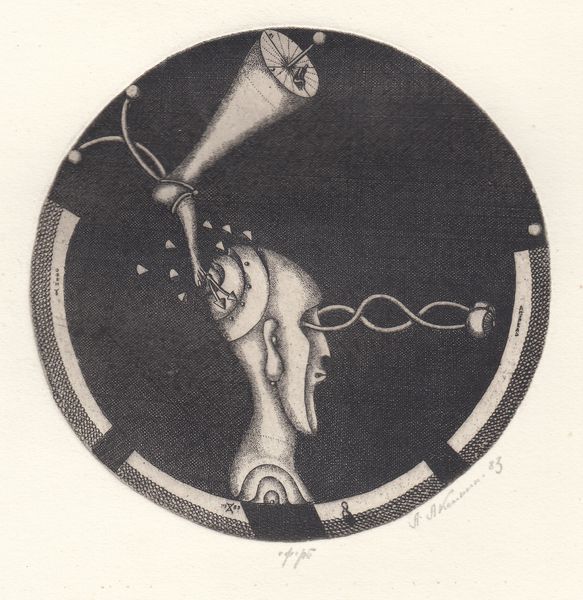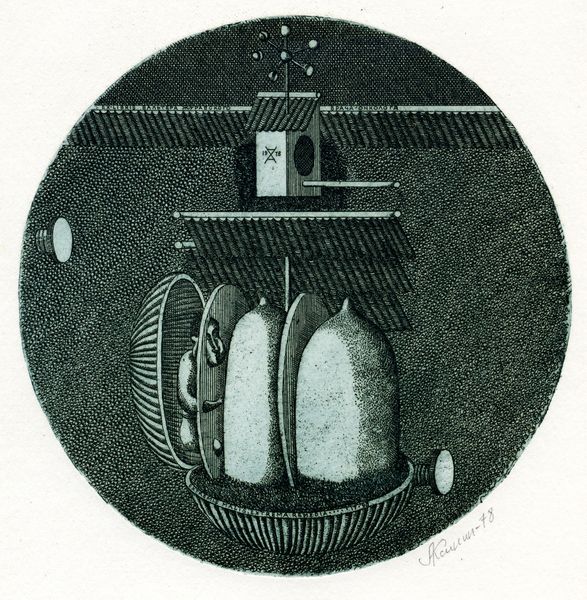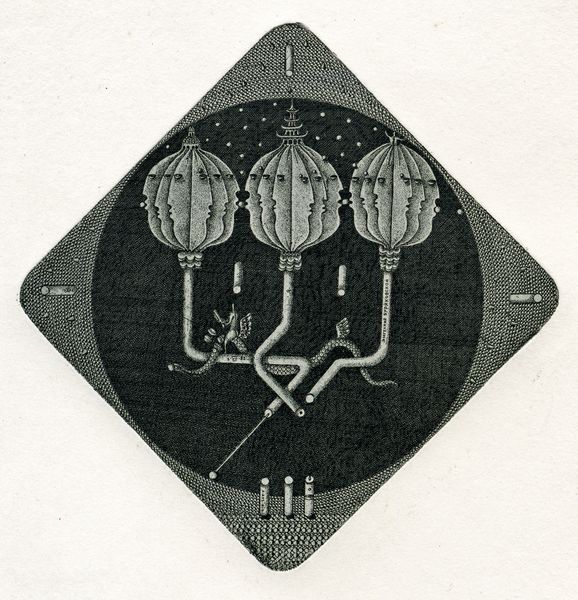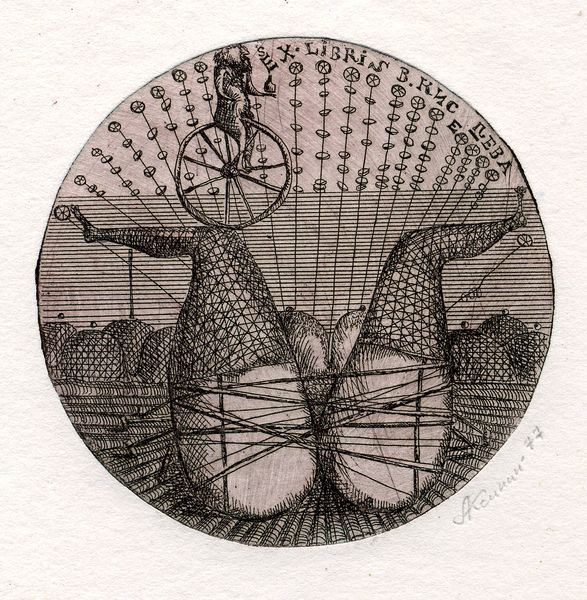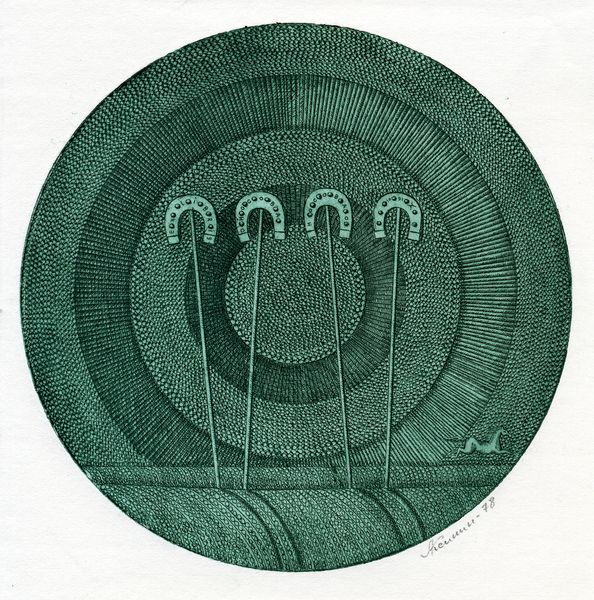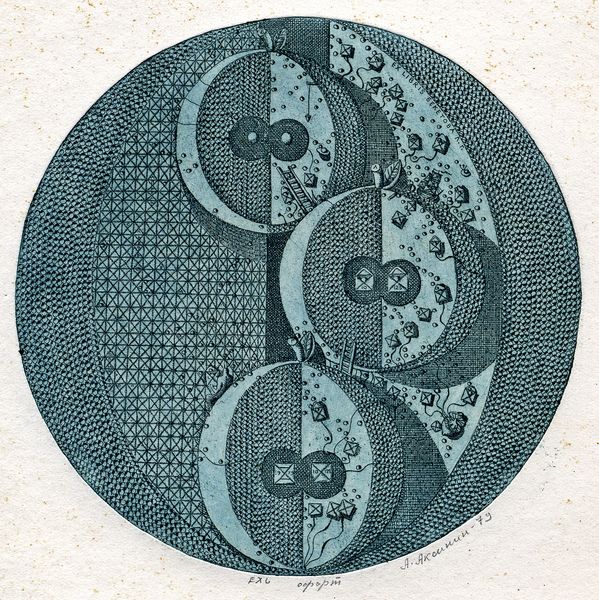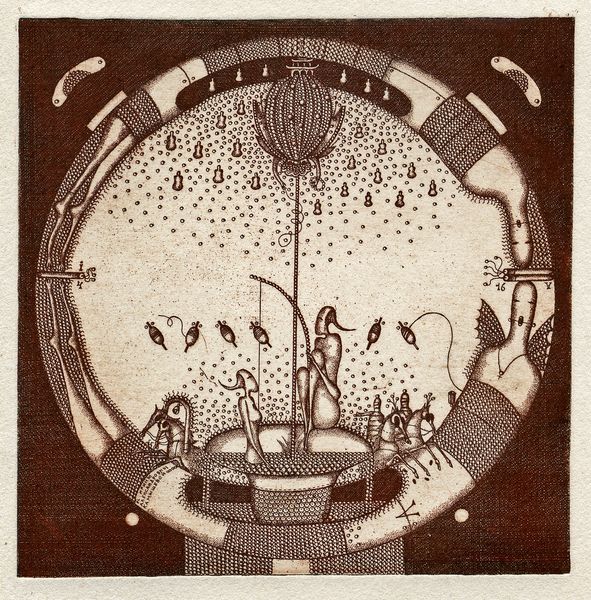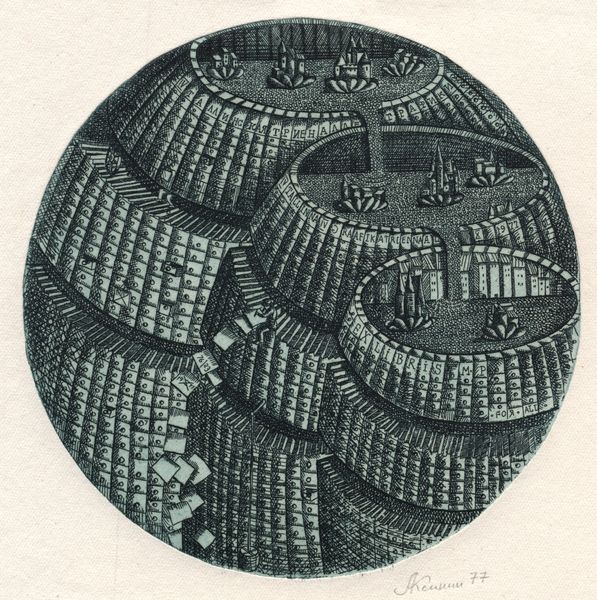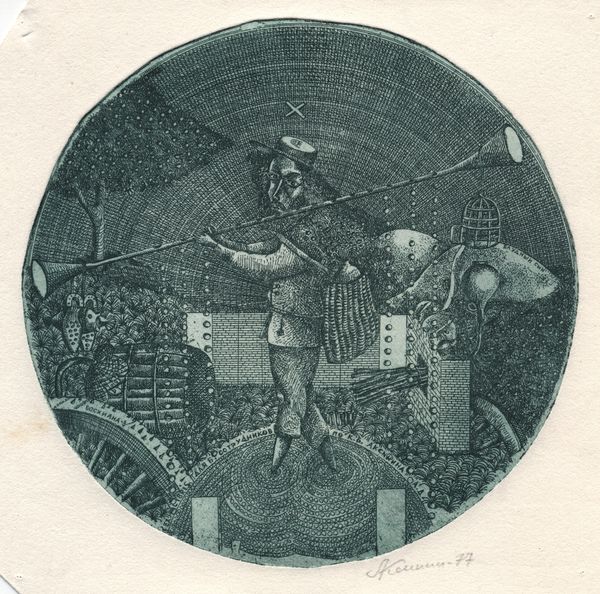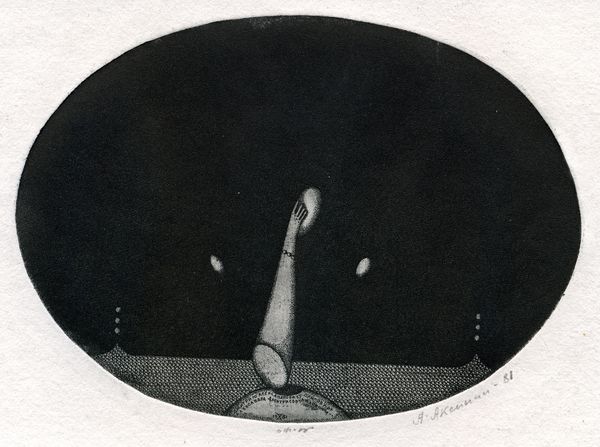
graphic-art, print, engraving
#
graphic-art
# print
#
figuration
#
line
#
engraving
Copyright: Oleksandr Aksinin,Fair Use
Curator: Here we have Oleksandr Aksinin’s “Exlibris of Yaan Pavle,” an engraving from 1978. Editor: My initial impression is one of curious stillness. The stark monochrome, the density of the marks... it evokes a sense of archaic ritual, almost like a diagram of an esoteric experiment. Curator: That’s an interesting take. What stands out to me is Aksinin’s masterful handling of the engraving technique, notice the meticulous network of lines and the labor involved in creating such texture and depth with a simple burin. It transforms the print into a complex, almost tactile object. Editor: Absolutely. Look at those repeating circles lining the arms – almost mimicking the segmented armor of a medieval knight or alchemist. The central figures could be read as strange, mutated tools or implements – their forms defying immediate identification. This ambiguity enhances the work’s symbolic richness. They could represent power, manipulation, or transformation. Curator: Agreed, though I wonder if the implements themselves relate more to the act of printing books, given the "Ex Libris" label. Considering its origin in 1978 during Soviet Ukraine, we must consider the role of bookplates, small engravings used to personalize books, and whether these tools could symbolize censorship or limited access to information during the era. Editor: That's fascinating – reframing the symbolic tools through a political lens gives us insight into the silent struggles and artistic resistance characteristic of the time. The floating disembodied hand seems almost like an unwilling participant, forever bound by its attachment to labor or an uncertain outcome. Curator: Precisely. The artist subtly subverts the function of the exlibris—usually a mark of ownership—into an artifact of contested creativity, almost revealing the tensions within the printing and creative industries. Editor: It's this visual compression – blending esoteric symbolism with potentially subtle resistance against the machinery of state control—that truly captivates. A humble bookplate suddenly morphs into a complex artifact resonating with layered meaning and quiet defiance. Curator: A wonderful piece highlighting not only process and production, but also the potential socio-political dimensions of seemingly simple designs. Editor: Indeed. It prompts us to consider how images become silent bearers of cultural memory.
Comments
No comments
Be the first to comment and join the conversation on the ultimate creative platform.
